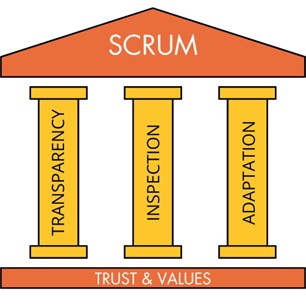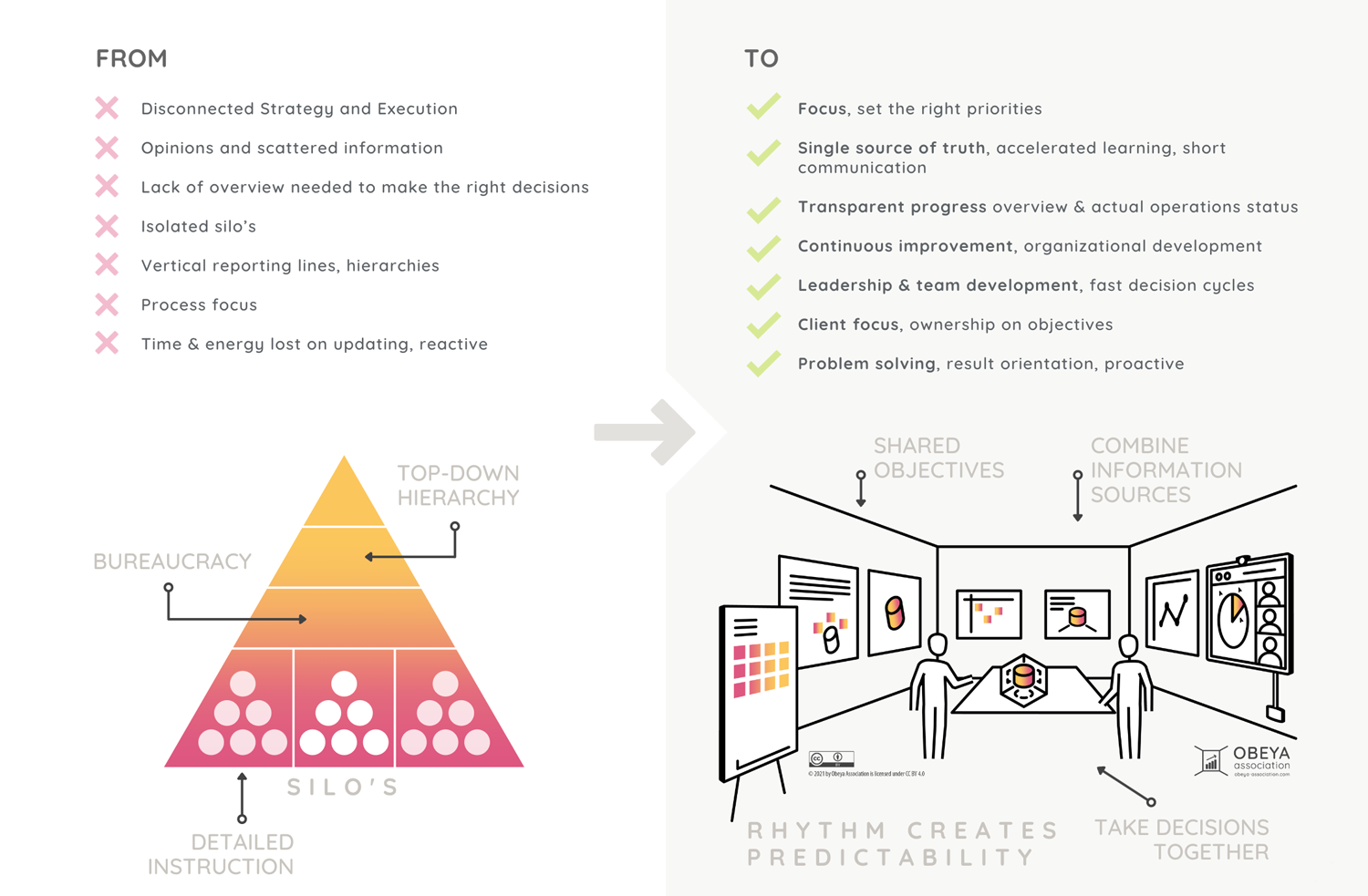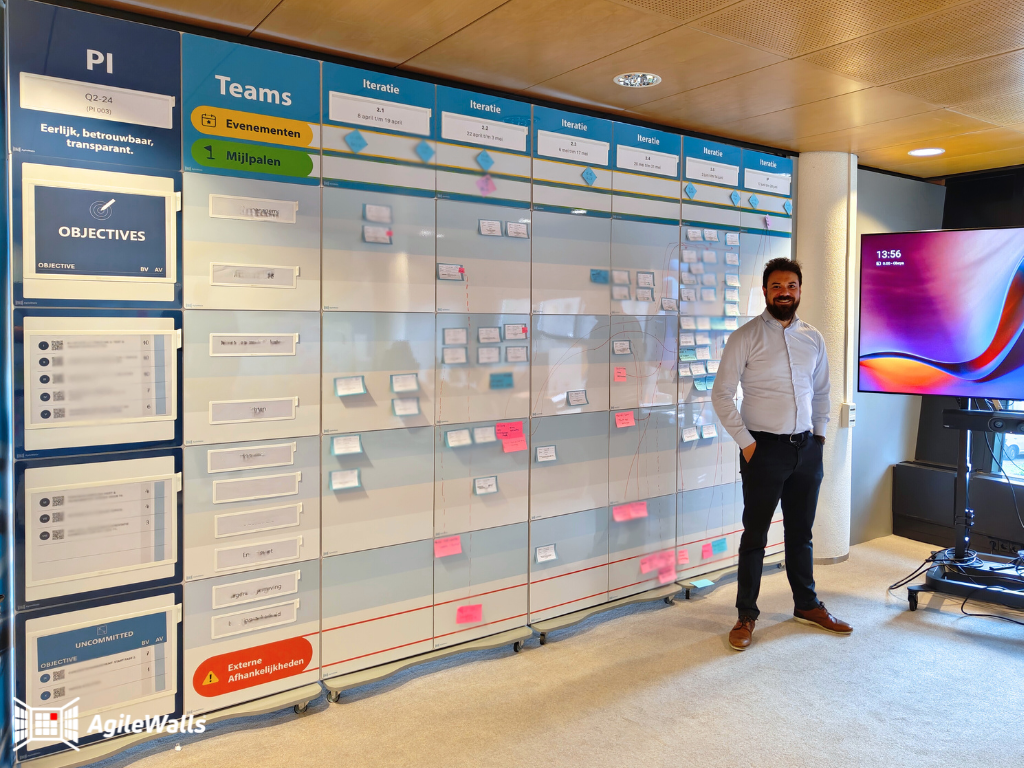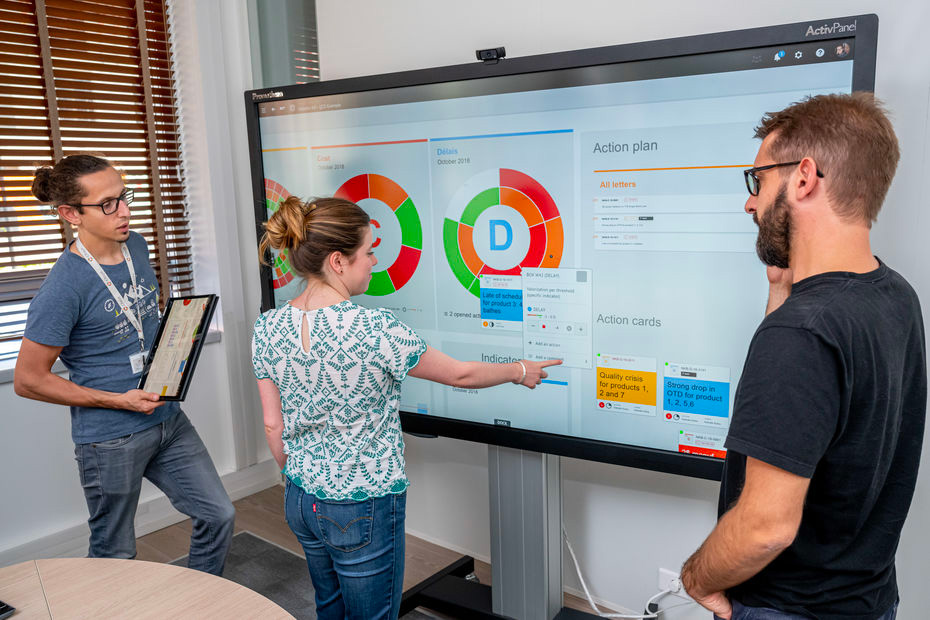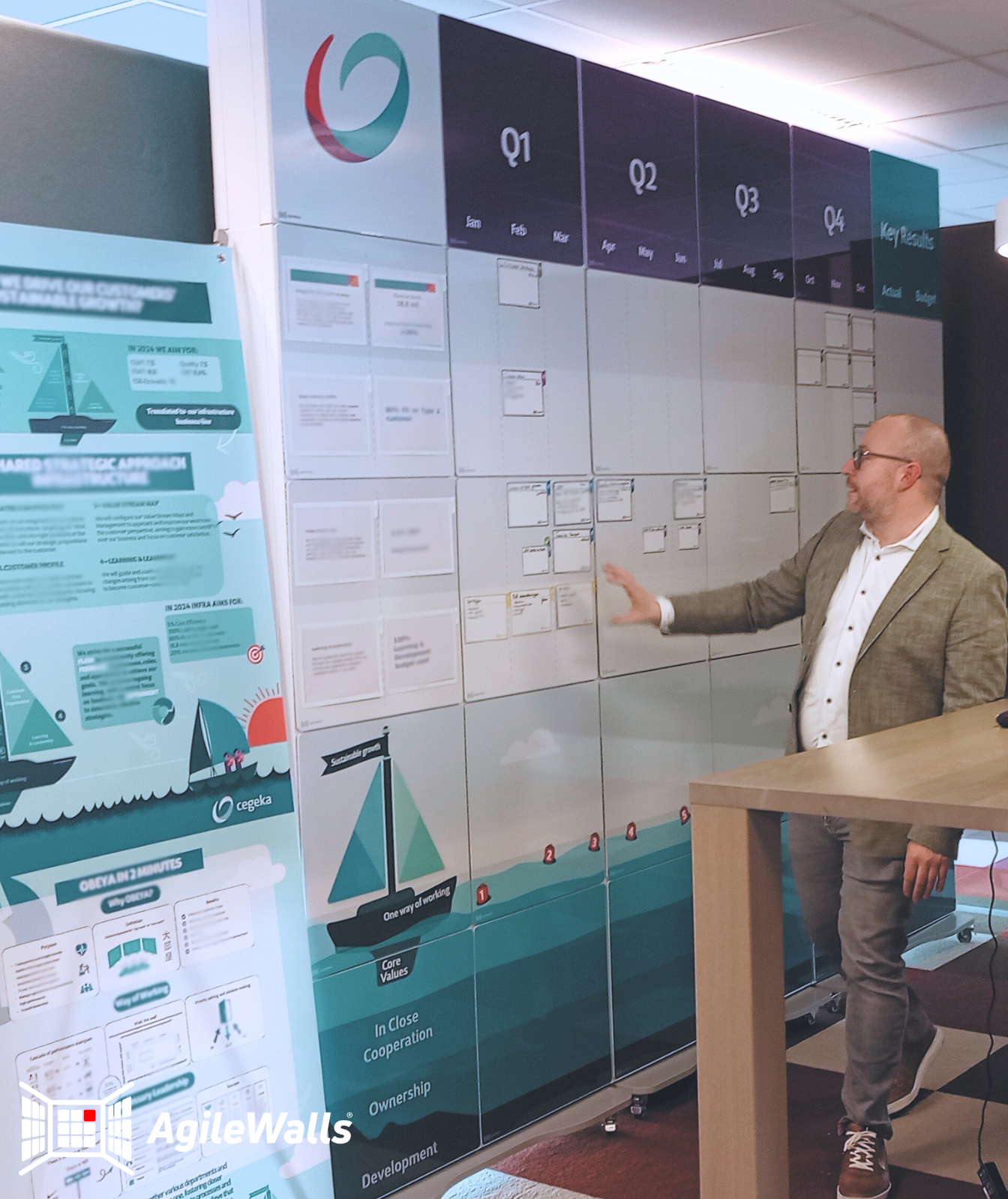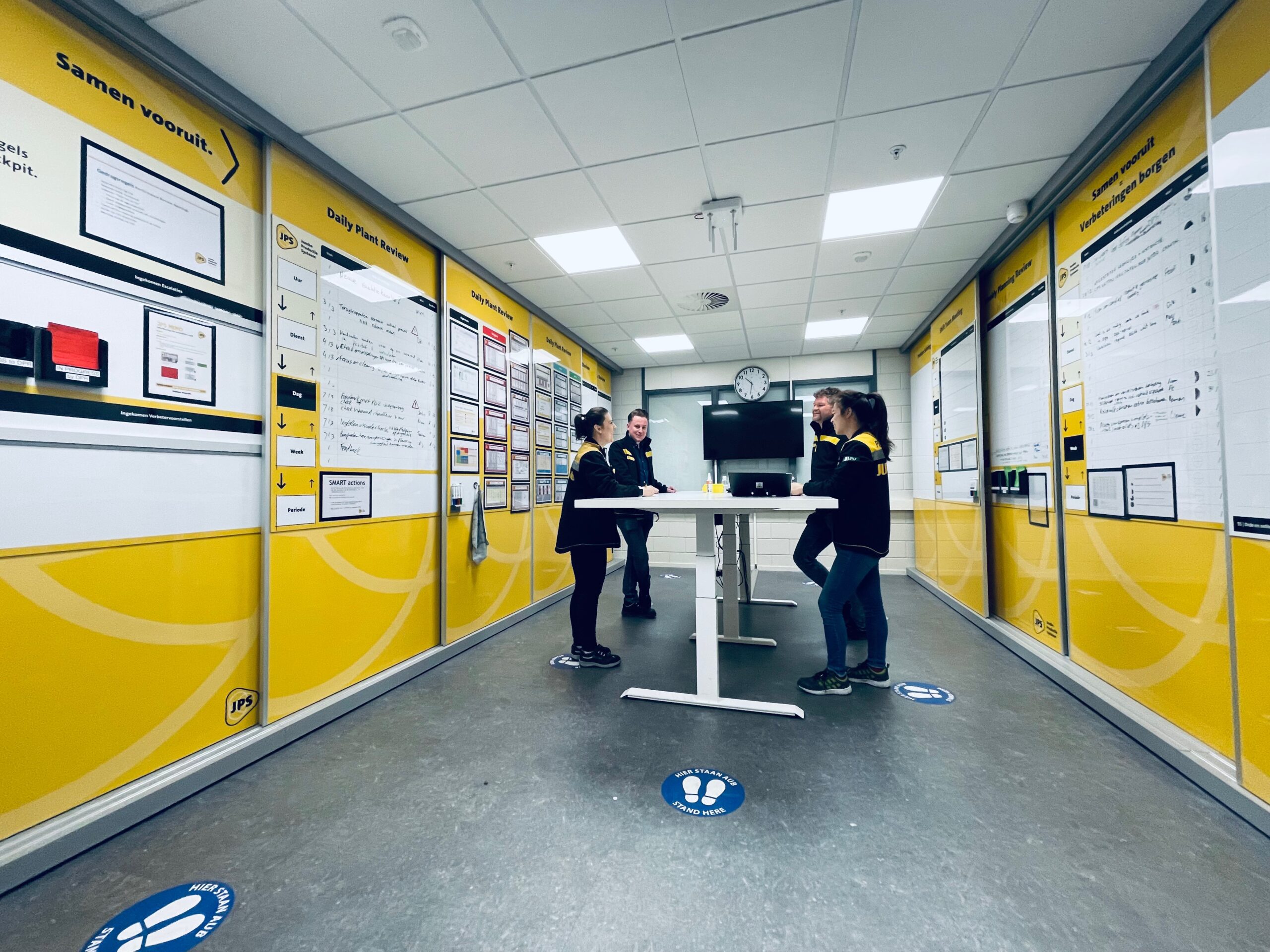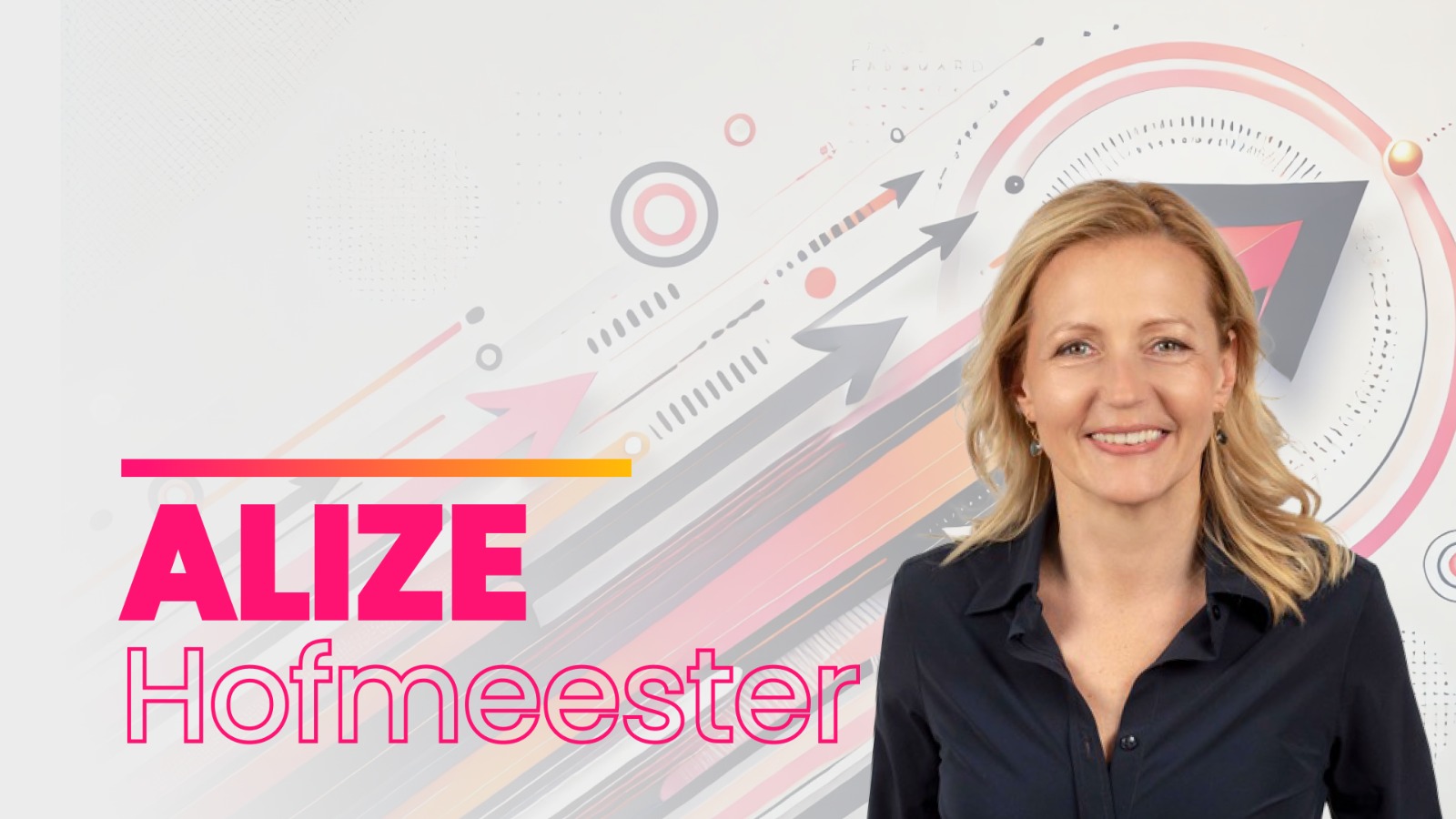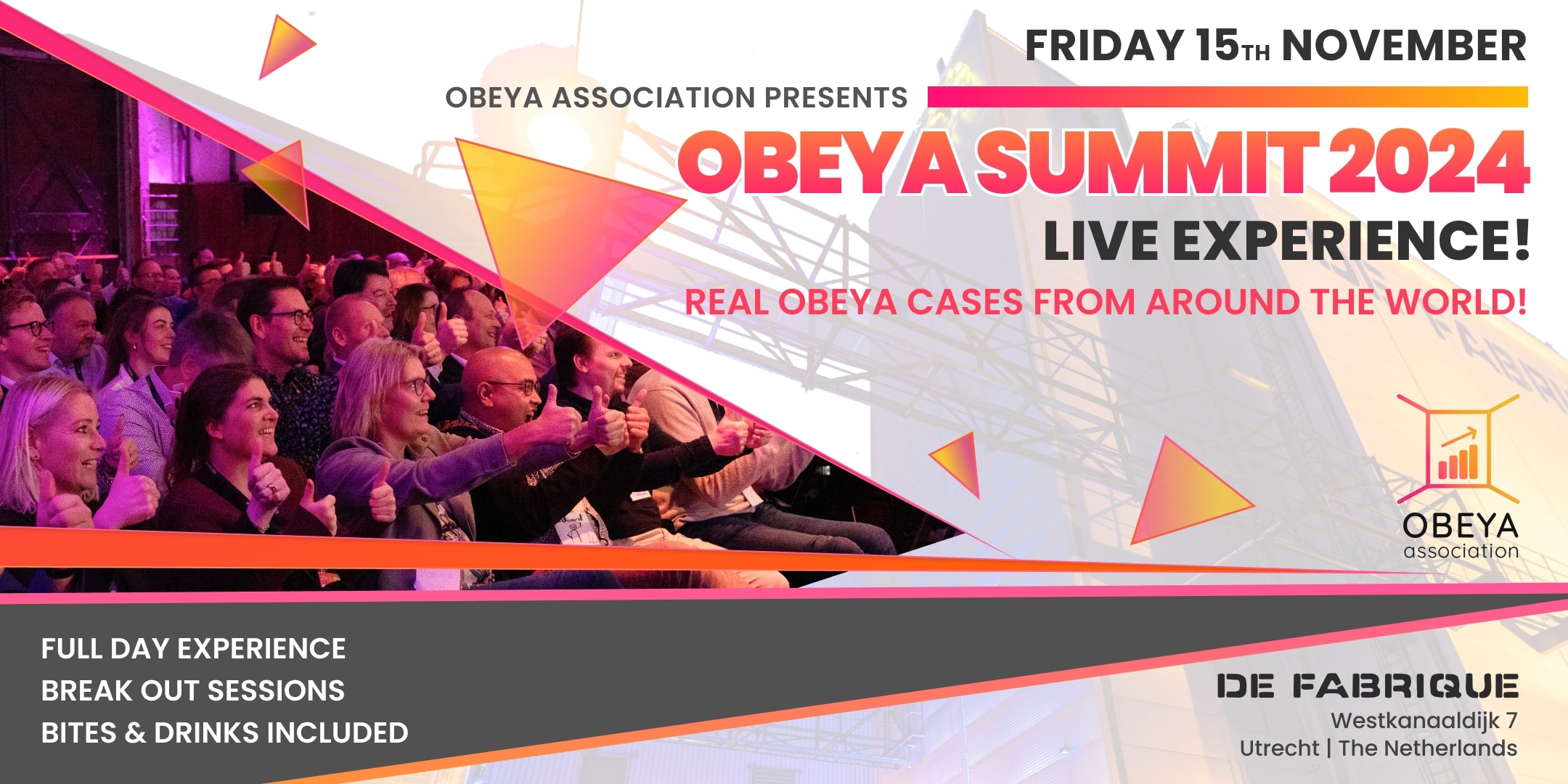
Author of this article: Beatrix Gottanka: https://www.agilistas.at/about/bea/
About the author:
Beatrix Gottanka is an Agile Coach, systems thinker, and software engineering graduate with more than 15 years of practical Scrum experience. She has led projects at enterprise scale, coached teams in startups and international organizations, and co-facilitated certification trainings. With a background in change management and a deep appreciation for human dynamics, she supports teams and leaders with clarity, empathy – and a touch of lightness when things get heavy.
Obeya & Scrum – the Dream Team for Alignment, Transparency and Scaling
Scrum is easy to understand – and hard to master.
It’s deliberately incomplete – never meant to exist in a vacuum. Every team must find its own way, shaped by its product, its people, and its context. And in many cases, Obeya is the perfect complement.
So what do you do when teams are delivering, but no one knows why, where to, or how it all fits together? Maybe you don’t need a new framework – just more visibility. Maybe you need: Obeya
What is Scrum?
Scrum is a lightweight framework for developing and sustaining complex products. It’s grounded in empiricism – transparency, inspection and adaptation.
A Scrum Team consists of:
- Product Owner – accountable for maximizing product value
- Scrum Master – accountable for understanding and applying Scrum effectively
- Developers – the people doing the work on the product
Scrum structures work in timeboxed Sprints (usually 1–4 weeks), with the goal of delivering a potentially shippable increment. It’s not a process or a method – it’s a framework that provides just enough structure to support empirical work, and enough openness to adapt to your environment.
What is Obeya?
Obeya means “big room” in Japanese – a concept developed at Toyota. But Obeya is more than just a physical space: it’s a way of working that fosters transparency, collaboration and decision-making.
In an Obeya – physical or digital – the most relevant information about strategy, goals, progress, risks and learnings is made visible. Based on lean principles, Obeya helps teams and organizations manage complexity through shared understanding and systemic thinking.
Obeya means: no more silos, disconnected plans or meeting chaos. Instead: shared orientation and a space for real dialogue
Alignment through Obeya: Direction, not just reaction
A central element of Scrum is goal orientation: the Product Goal and Sprint Goal guide focus and decision-making – a red thread through complexity.
But in multi-team setups or large stakeholder environments, that thread can fray. Suddenly there are ten sprint goals but no shared direction. Obeya helps make that shared direction visible – through strategic guardrails, joint OKRs, or a unifying product goal. Alignment means everyone knows what matters.
In a well-run Obeya space, teams can ask: “Are we still contributing to the goal?” That creates accountability – without micromanagement.
Transparency is key: No empiricism without it
Transparency isn’t a nice-to-have – it’s the foundation of any agile approach. In Scrum, it’s one of the three pillars of empirical process control. Without transparency, there’s nothing to inspect – and no basis for meaningful adaptation.
Scrum only works when information is visible and understandable. That’s exactly where Obeya shines:
The Obeya room – physical or digital – makes the invisible visible. Strategy, goals, progress, dependencies, risks – all in plain sight. It creates a shared picture of the system, enabling better dialogue and faster learning.
Obeya provides the transparency that empiricism demands.
Because if you can’t see what is, you can’t improve what should be.
Scaling with sense: Coordination without command-and-control
Scrum is built for single teams. When multiple Scrum Teams work in one organization, you need connection and context – not necessarily a new framework.
Obeya provides exactly that: a space for synchronization and systemic thinking. Teams remain autonomous in their Scrum execution, but come together in Obeya to surface dependencies, discuss risks, and share learnings.
This turns a loose collection of teams into a connected network – aligned through clarity and shared purpose. Scaling happens not through added structure, but through mutual understanding and conscious integration.
Why Scrum and Obeya are a Dream Team?
Scrum structures how teams work on a daily basis. Obeya provides the why and where to – connecting strategic intent with operational execution.
| Scrum | Obeya |
|---|---|
| Timeboxed, within the team | Information flows across teams |
| Clear Sprint rhythm | Regular Lean Pulse rhythm |
| Iteration & focus | Alignment & overview |
| Product Backlog | Strategic Goals |
| Sprint Review | Strategic Reflection |
Together, they offer:
- Focus and commitment at the team level
- Shared goals and systemic clarity
- Scalable collaboration – without scaling frameworks
Three Practice Scenarios: From Startup to Enterprise
1. Startup with 2 Scrum Teams
Context: A FinTech startup with two Scrum Teams (Frontend and Backend). Both are doing well – but lack a shared view of how things connect.
Obeya-Setup:
Digital board with company vision, sprint goals, shared roadmap elements and blockers
Effects:
- Shared understanding emerges
- Dependencies become visible
- Leadership stays informed – without micromanaging
2. Mid-sized company with 5 teams
Context: A software firm with five Scrum Teams. Sprint Reviews generate insights – but no shared direction. Strategy is missing in the day-to-day.
Obeya-Setup: Physical room with walls for: business goals, team progress, impediments, metrics, retrospectives
Effects:
- Regular exchange in Obeya pulses
- Shared risk awareness
- Decisions based on real observations
3. Enterprise with global Scrum Teams
Context: A corporation with 30 Scrum Teams worldwide. There are reviews, some SAFe elements, endless emails – but no big picture.
Obeya-Setup:
Global digital space (e.g. iObeya, Miro) with:
- Strategic guardrails
- Dependency map
- Aggregated team progress
- Shared OKRs
Effects:
- Leadership can participate instead of just reviewing
- Teams understand how their work contributes
- Portfolio decisions become more informed
Conclusion: See the big picture – with Obeya at your side
Scrum brings focus, iteration and real teamwork. But in dynamic organizations, we also need direction (alignment), visibility (transparency), and connectedness (scaling).
Obeya brings all of that – to the wall, the board, or the screen.
It doesn’t replace your framework – it complements what’s often missing: overview and conversation.
If you’re serious about growing Scrum in your organization, maybe don’t start with more roles or process layers – start with a space for shared understanding.
Scrum in action. Obeya in view. Clarity in the system.

